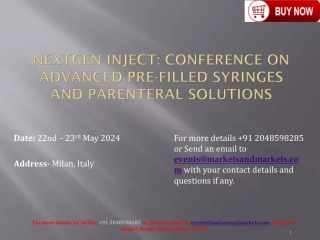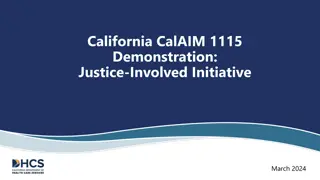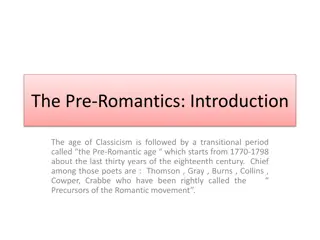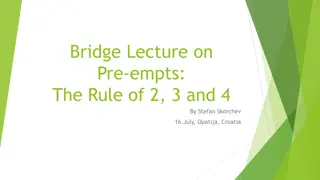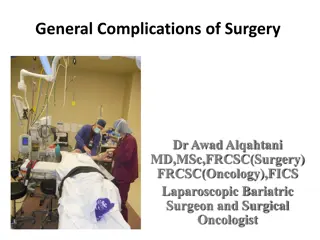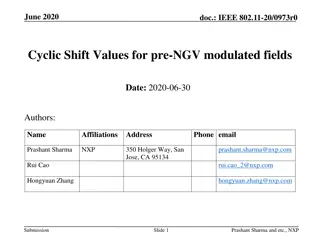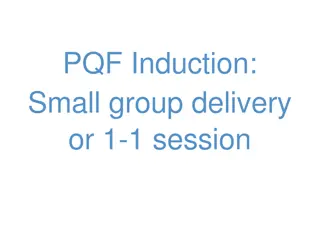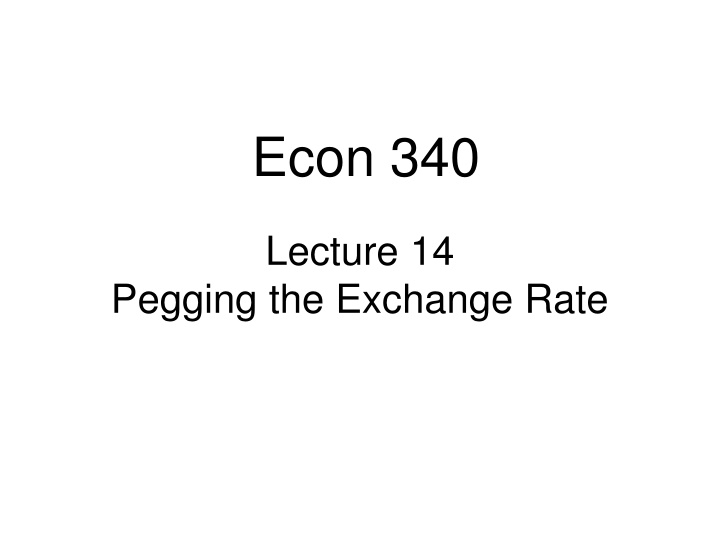
Exchange Rate Pegging in Economics
Explore the concept of pegging the exchange rate in economics, covering topics such as market intervention, bands of fluctuation, hybrids of pegged and floating rates, the gold standard, mechanics of intervention, reserves, money supply, effects of pegging, and more.
Download Presentation

Please find below an Image/Link to download the presentation.
The content on the website is provided AS IS for your information and personal use only. It may not be sold, licensed, or shared on other websites without obtaining consent from the author. If you encounter any issues during the download, it is possible that the publisher has removed the file from their server.
You are allowed to download the files provided on this website for personal or commercial use, subject to the condition that they are used lawfully. All files are the property of their respective owners.
The content on the website is provided AS IS for your information and personal use only. It may not be sold, licensed, or shared on other websites without obtaining consent from the author.
E N D
Presentation Transcript
Econ 340 Lecture 14 Pegging the Exchange Rate
Lecture 14 Outline: Pegging the Exchange Rate How It s Done Market Intervention Bands of Fluctuation Hybrids of Pegged and Floating The Gold Standard Who Pegs? Mechanics of Intervention Reserves Money Supply Sterilization Effects of Pegging Chinese Currency Manipulation Econ 340, Deardorff, Lecture 14: Pegging 2
How Its Done What Pegging Means To fix the exchange rate by intervening in the market It does not mean just fixing it by law making it illegal to exchange the currency at other than the official rate Countries do that too, but that is not pegging, and it does not entirely work: gives rise to black market Intervention means Buying or selling foreign currency, so as to Make up the difference between the market s supply and demand Normally done by the central bank of the pegging country Econ 340, Deardorff, Lecture 14: Pegging 3
How Its Done Example: If the Fed were to peg the $ to the at rate E* (Note: it does not do this!) E = $/ Fed buys the extra E S S E* E* Fed sells the needed D D Q Q Econ 340, Deardorff, Lecture 14: Pegging 4
How Its Done What Pegging Means In practice, pegs are never exact Central banks Set a par value (= central value ) Intervene only if rate moves some distance (e.g., 1%) above or below this par value This range of movement is called an exchange rate band We will ignore this complication in drawing the market, and pretend that they peg the rate exactly Econ 340, Deardorff, Lecture 14: Pegging 5
How Its Done Hybrids of Pegged and Freely Floating Exchange Rates Managed Float Intervene to influence the rate But do not announce a target rate or par value And do not necessarily keep the rate constant Dirty Float = same as Managed Float Econ 340, Deardorff, Lecture 14: Pegging 6
How Its Done Hybrids of Pegged and Freely Floating Exchange Rates Leaning Against the Wind Particular form of managed float that Does not try to alter the level of the exchange rate, but Does try to slow its rate of change Purpose: to dampen fluctuations Econ 340, Deardorff, Lecture 14: Pegging 7
How Its Done Hybrids of Pegged and Freely Floating Exchange Rates Crawling Peg A pegged rate with a par value that moves Slowly and Predictably Example: Country might announce that the par value will appreciate by 0.01% each week as long as central bank is buying foreign exchange, and vice versa Note: All of these hybrids still do require intervention in the exchange market Econ 340, Deardorff, Lecture 14: Pegging 8
How Its Done The Gold Standard Common in 19th century, but ended 1914. Countries Defined their currencies in terms of gold Stood ready to buy and sell gold at their official rate Result was like pegged exchange rates, except that the pegging was to gold. Rules of the Gold Standard Fix price of gold in terms of your own currency Keep money supply equal gold supply (or proportional to it) Be ready to redeem currency in terms of gold and allow gold (and thus money) to flow internationally Implication of the gold standard: Changes in money supply (gold) equilibrate the markets Econ 340, Deardorff, Lecture 14: Pegging 9
Lecture 14 Outline: Pegging the Exchange Rate How It s Done Market Intervention Bands of Fluctuation Hybrids of Pegged and Floating The Gold Standard Who Pegs? Mechanics of Intervention Reserves Money Supply Sterilization Effects of Pegging Chinese Currency Manipulation Econ 340, Deardorff, Lecture 14: Pegging 10
Who Pegs? US? No But we did have a pegged exchange rate until 1973 (Strictly speaking, it was other countries that pegged to us, not us to them) In fact, from the late 1940s until 1973, virtually all countries pegged to the US dollar (exceptions were Canada, which sometimes floated, and several former colonies that pegged to the British pound or French franc) Econ 340, Deardorff, Lecture 14: Pegging 11
Who Pegs? Europe? No: the euro floats freely Before the euro, but after 1973, Countries did not peg to currencies outside Europe But they often did try to peg to each other Denmark now pegs to the euro Other EU countries outside the euro (UK, Sweden) and countries outside the EU (Switzerland, Norway) all have floating exchange rates Econ 340, Deardorff, Lecture 14: Pegging 12
Who Pegs? Other Developed Countries? No: Canada, Japan, Australia, New Zealand, S. Korea all have floating rates Econ 340, Deardorff, Lecture 14: Pegging 13
Who Pegs? Developing Countries? They are mixed A sample (from IMF, 2008): Argentina: pegged (to US dollar) Brazil: float Bulgaria: currency board (pegged to euro) China pegged to dollar until summer 05, and July 08 to July 2010; now sometimes says it pegs to basket of currencies Costa Rica: crawling peg India: managed float Egypt: managed float Nepal: pegged (to India s rupee) Econ 340, Deardorff, Lecture 14: Pegging 14
Lecture 14 Outline: Pegging the Exchange Rate How It s Done Market Intervention Bands of Fluctuation Hybrids of Pegged and Floating The Gold Standard Who Pegs? Mechanics of Intervention Reserves Money Supply Sterilization Effects of Pegging Chinese Currency Manipulation Econ 340, Deardorff, Lecture 14: Pegging 15
Mechanics of Intervention Always: Buy or sell foreign currency in exchange for domestic currency This has two effects, if nothing else is done: 1. Changes the level of reserves of foreign currency 2. Changes the level of the country s own domestic money supply in circulation Econ 340, Deardorff, Lecture 14: Pegging 16
Mechanics of Intervention Change in Central Bank s Reserves of Foreign Currency What they buy is added to reserves What they sell is subtracted from reserves Econ 340, Deardorff, Lecture 14: Pegging 17
Mechanics of Intervention Change in Country s Domestic Money Supply When US Central Bank (CB) buys with $, those $ go into circulation This adds to the US money supply (Actually, it adds even more, due to money multiplier you learned about in Econ 102) When CB sells for $, those $ come out of circulation Reducing the money supply Similar to Gold Standard Econ 340, Deardorff, Lecture 14: Pegging 18
Mechanics of Intervention Sterilization However, Central Bank has the option of preventing this change in the money supply by sterilization Sterilization = Use of offsetting open market operations to keep the money supply unchanged Example: To sterilize a $1 m. purchase of foreign currency, CB would sell $1 m.-worth of bonds This takes the $1 m. back out of circulation Sterilization is a policy choice Central Bank can do it, or not, as it sees fit Some central banks have said they lack the tools to sterilize Most, if they intervene in the exchange market, do sterilize, thus preventing gold-standard-like adjustment Econ 340, Deardorff, Lecture 14: Pegging 19
Lecture 14 Outline: Pegging the Exchange Rate How It s Done Market Intervention Bands of Fluctuation Hybrids of Pegged and Floating The Gold Standard Who Pegs? Mechanics of Intervention Reserves Money Supply Sterilization Effects of Pegging Chinese Currency Manipulation Econ 340, Deardorff, Lecture 14: Pegging 20
Effects of Pegging Case I: Dollar Over-valued In this case (unlike PPP), overvalued means the dollar is being pegged at a rate that is above (i.e., appreciated relative to) the market-clearing rate Which means that the actual exchange rate, E, the price of foreign currency, is below the market-clearing rate, E0 At the overvalued exchange rate, there is excess demand for foreign currency, which CB must provide by selling out of reserves. Thus reserves fall. If it does not sterilize, then the money supply also shrinks If it does sterilize, then it buys bonds Econ 340, Deardorff, Lecture 14: Pegging 21
Effects of Pegging Peg if $ Overvalued E = $/ S Effects of Pegging if $ Overvalued: Reserves (of ) fall & if intervention is not sterilized, Money supply (of $) falls E0 E* Fed sells In exchange for $ D Q Econ 340, Deardorff, Lecture 14: Pegging 22
Effects of Pegging Further implication of an overvalued peg If it continues, central bank must eventually run out of reserves This, as we ll see, causes a Crisis Exchange-rate crisis, or Financial crisis Econ 340, Deardorff, Lecture 14: Pegging 23
Effects of Pegging Case II: Dollar Under-valued In this case, undervalued means the dollar is being pegged at a rate that is below (i.e., depreciated relative to) the market-clearing rate Which means that E, the price of foreign currency, is above the market-clearing rate, E0 At undervalued rate, there is excess supply of foreign currency, which CB must take out of the market by buying and adding to reserves If it does not sterilize, then the money supply grows If it does sterilize, then it sells bonds Econ 340, Deardorff, Lecture 14: Pegging 24
Effects of Pegging Peg if $ Undervalued E = $/ Fed buys S Effects of Pegging if $ Undervalued: Reserves (of ) rise & if intervention is not sterilized, Money supply (of $) rises with $ E* E0 D Q Econ 340, Deardorff, Lecture 14: Pegging 25
Effects of Pegging Further implication of an undervalued peg Nothing critically important If it continues, Central Bank piles up more and more reserves, but there is no limit on its ability to do that Result: No crisis However, if it does not sterilize, then money supply grows too, and this may cause inflation Econ 340, Deardorff, Lecture 14: Pegging 26
Effects of Pegging Note the asymmetry: Overvalued peg leads to crisis Undervalued peg does not Econ 340, Deardorff, Lecture 14: Pegging 27
Effects of Pegging Example of Undervalued Peg: China Source PNC Financial Services Group Econ 340, Deardorff, Lecture 14: Pegging 28
Effects of Pegging A Special Case: The US Dollar Most countries that peg their currencies, peg them to the US dollar That means that their reserves are dollar- denominated assets, mostly US gov t bonds If they keep their currencies undervalued, then that means the dollar is overvalued But the overvalued dollar need not lead to crisis Others want, need, or at least choose, to hold our dollars Econ 340, Deardorff, Lecture 14: Pegging 29
Effects of Pegging A Special Case: The US Dollar (see Ferguson) Most of US foreign borrowing is being met by foreign central banks That means they are holding reserves, a result of buying dollars to Keep their currency down Keep the US dollar up Or just to have dollars available in case of crisis We benefit from the high dollar: we can buy cheap goods and services But we borrow in dollars in order to do it If others were to stop lending, then the dollar would fall and so would the value of our debt, which they hold! Thus it is their problem, not ours! Econ 340, Deardorff, Lecture 14: Pegging 30
Effects of Pegging A Special Case: The US Dollar vs Chinese Renminbi (see Levy) Many US policymakers disagree: Thus US has pressured China to appreciate the yuan Why? To make it easier to sell US goods Congress threatens trade barriers against China Might have once been legal under Section 421, special China safeguard negotiated with China s WTO accession, but that has now expired. Instead Trump is using tariffs on China for other reasons Econ 340, Deardorff, Lecture 14: Pegging 31
Effects of Pegging A Special Case: The US Dollar vs Chinese Renminbi (see Levy) Levy argues Tariffs against China won t work We ll just switch to importing from other low-cost countries US trade deficit (due to our low saving) will be unchanged To really have an effect and send a message, we should: Reduce government spending! Econ 340, Deardorff, Lecture 14: Pegging 32
Chinas Exchange Rate, US$/Yuan, 2000-2019 0.180 0.160 0.140 0.120 The exchange rate did not change at all between 2000 and 2005 0.100 0.080 0.060 0.040 0.020 0.000 2019 Mar 2002 Jul 2004 Mar 2007 Jul 2009 Mar 2012 Jul 2014 Mar 2017 Jul 2001 Sep 2006 Sep 2011 Sep 2016 Sep 2000 Jan 2003 May 2005 Jan 2008 May 2010 Jan 2013 May 2015 Jan 2018 May 2000 Nov 2005 Nov 2010 Nov 2015 Nov Econ 340, Deardorff, Lecture 14: Pegging 33
China's Reserves, $ trillions, 2000-2019 4.50 4.00 3.50 And reserves more than quadrupled! 3.00 2.50 2.00 1.50 1.00 0.50 0.00 2005Q2 2000Q1 2000Q4 2001Q3 2002Q2 2003Q1 2003Q4 2004Q3 2006Q1 2006Q4 2007Q3 2008Q2 2009Q1 2009Q4 2010Q3 2011Q2 2012Q1 2012Q4 2013Q3 2014Q2 2015Q1 2015Q4 2016Q3 2017Q2 2018Q1 2018Q4 Econ 340, Deardorff, Lecture 14: Pegging 34
Effects of Pegging A Special Case: The US Dollar vs Chinese Renminbi It is clear from the two graphs that China was pegging their currency to the US dollar in 2000-2005 To do so they were buying dollars and thus accumulating almost $1 trillion of reserves Econ 340, Deardorff, Lecture 14: Pegging 35
Effects of Pegging Example: To see the effects on US of China pegging versus floating, Consider the Chinese foreign exchange market (for $) Suppose the US economy expands, increasing US imports from China. What will happen if The renminbi floats? Or, instead, if The renminbi is pegged to the US dollar? We ll look at China s market for foreign exchange, where their foreign currency is the dollar Econ 340, Deardorff, Lecture 14: Pegging 36
Effects of US Expansion on China if Renminbi is Floating US expansion if renminbi is floating Effects of US expansion: S$ shifts right (more US imports from China) Yuan appreciates ( /$ falls) No change in China s reserves or money supply Rising reduces US imports and increases US exports E = /$ S$ S $ E0 E1 D$ Q$ Econ 340, Deardorff, Lecture 14: Pegging 37
Effects of US Expansion on China if Renminbi is Pegged US expansion if renminbi is pegged Effects of US expansion: S$ shifts right (more US imports from China) Yuan stays constant (no further effect on US trade) People s Bank of China buys more $ Reserves rise faster Money supply expands faster if not sterilized May cause inflation in China Q$ E = /$ S$ R S $ R E* D$ Econ 340, Deardorff, Lecture 14: Pegging 38
Effects of Pegging Implication of Example: Something always changes in the exchange market when changes occur for trade, capital flows, or other transactions Exchange rate changes if floating Reserves (and maybe money supply) change if pegged Econ 340, Deardorff, Lecture 14: Pegging 39
Lecture 14 Outline: Pegging the Exchange Rate How It s Done Market Intervention Bands of Fluctuation Hybrids of Pegged and Floating The Gold Standard Who Pegs? Mechanics of Intervention Reserves Money Supply Sterilization Effects of Pegging Chinese Currency Manipulation Econ 340, Deardorff, Lecture 14: Pegging 40
Chinese Currency Manipulation We saw in the graphs above that China was intervening in 2000-2005 to keep the value of its currency down This led policy makers in the US to complain, and in 2005 China let its currency rise Econ 340, Deardorff, Lecture 14: Pegging 41
Chinas Exchange Rate, US$/Yuan, 2000-2019 0.180 0.160 0.140 0.120 The yuan appreciated steadily between 2005 and 2008 0.100 0.080 0.060 0.040 0.020 0.000 2019 Mar 2002 Jul 2004 Mar 2007 Jul 2009 Mar 2012 Jul 2014 Mar 2017 Jul 2001 Sep 2006 Sep 2011 Sep 2016 Sep 2000 Jan 2003 May 2005 Jan 2008 May 2010 Jan 2013 May 2015 Jan 2018 May 2000 Nov 2005 Nov 2010 Nov 2015 Nov Econ 340, Deardorff, Lecture 14: Pegging 42
Chinese Currency Manipulation But China s reserves continued to rise, indicating that it was still buying dollars. Econ 340, Deardorff, Lecture 14: Pegging 43
China's Reserves, $ trillions, 2000-2019 4.50 4.00 3.50 3.00 Reserves continued to rise, to almost $2 trillion 2.50 2.00 1.50 1.00 0.50 0.00 2005Q2 2000Q1 2000Q4 2001Q3 2002Q2 2003Q1 2003Q4 2004Q3 2006Q1 2006Q4 2007Q3 2008Q2 2009Q1 2009Q4 2010Q3 2011Q2 2012Q1 2012Q4 2013Q3 2014Q2 2015Q1 2015Q4 2016Q3 2017Q2 2018Q1 2018Q4 Econ 340, Deardorff, Lecture 14: Pegging 44
Chinese Currency Manipulation The financial crisis of 2008 slowed down both The appreciation of the renminbi, and The growth of reserves Econ 340, Deardorff, Lecture 14: Pegging 45
Chinas Exchange Rate, US$/Yuan, 2000-2019 0.180 0.160 0.140 0.120 0.100 The yuan stopped rising in 2008, then rose slowly 0.080 0.060 0.040 0.020 0.000 2019 Mar 2002 Jul 2004 Mar 2007 Jul 2009 Mar 2012 Jul 2014 Mar 2017 Jul 2001 Sep 2006 Sep 2011 Sep 2016 Sep 2000 Jan 2003 May 2005 Jan 2008 May 2010 Jan 2013 May 2015 Jan 2018 May 2000 Nov 2005 Nov 2010 Nov 2015 Nov Econ 340, Deardorff, Lecture 14: Pegging 46
China's Reserves, $ trillions, 2000-2019 4.50 4.00 3.50 3.00 2.50 2.00 Reserves mostly rose after 2008, to over $4 trillion in 2014 1.50 1.00 0.50 0.00 2005Q2 2000Q1 2000Q4 2001Q3 2002Q2 2003Q1 2003Q4 2004Q3 2006Q1 2006Q4 2007Q3 2008Q2 2009Q1 2009Q4 2010Q3 2011Q2 2012Q1 2012Q4 2013Q3 2014Q2 2015Q1 2015Q4 2016Q3 2017Q2 2018Q1 2018Q4 Econ 340, Deardorff, Lecture 14: Pegging 47
Chinese Currency Manipulation The financial crisis of 2008 Slowed down the appreciation of the renminbi, off and on But reserves continued to grow rapidly in most periods until 2014 China s purchases of US dollars were still holding down the yuan s value, or slowing its rise But all that changed in 2014 Econ 340, Deardorff, Lecture 14: Pegging 48
Chinas Exchange Rate, US$/Yuan, 2000-2019 0.180 0.160 0.140 0.120 0.100 The yuan reached its peak in 2013, and began to fall in 2015 0.080 0.060 0.040 0.020 0.000 2019 Mar 2002 Jul 2004 Mar 2007 Jul 2009 Mar 2012 Jul 2014 Mar 2017 Jul 2001 Sep 2006 Sep 2011 Sep 2016 Sep 2000 Jan 2003 May 2005 Jan 2008 May 2010 Jan 2013 May 2015 Jan 2018 May 2000 Nov 2005 Nov 2010 Nov 2015 Nov Econ 340, Deardorff, Lecture 14: Pegging 49
US$/Yuan 2016-17 6.6% Econ 340, Deardorff, Lecture 14: Pegging 50

